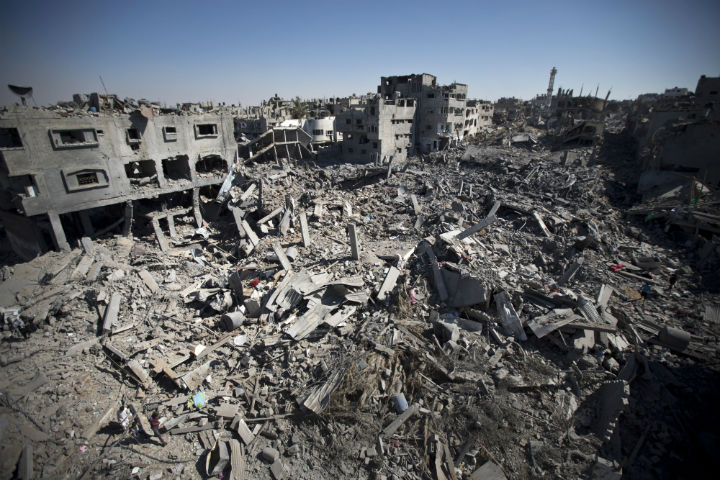The escalating conflict between Israel and Hamas is in its 22nd day and despite a brief lull, Israeli Prime Minister said Monday evening the country should prepare for a “prolonged campaign.”

But the extent of destruction in the Gaza Strip is already unimaginable.
Almost, because Gaza has seen this sort of devastation before.
READ MORE: Netanyahu tells Israelis to be ‘ready for prolonged campaign’
This is Israel’s third major offensive against Hamas since 2008, including Operation Cast Lead between Dec. 27, 2008 and Jan. 18, 2009 and Operation Pillar of Defense between Nov. 14 and 21, 2012.
About 3,500 homes in the Gaza Strip were completely destroyed during Operation Cast Lead, which also involved an Israeli Defense Force (IDF) ground incursion in the Gaza Strip.
The UN estimated at least 6,268 homes were destroyed or severely damaged and the Gaza Strip incurred about $2 billion in losses, including those to businesses, according to the Wall Street Journal.
The UN Conference on Trade and Development in 2009 put the estimated total losses at $4 billion and said the living conditions in Gaza. following Operation Cast Lead and the first two years of the Israeli blockade, were “at their worst since 1967.”
READ MORE: Israel-Gaza: When real rockets lead to verbal missiles
Early estimates for Gaza suggest the financial costs of the latest conflict could be US $3 billion, Ma’an News Agency reported July 22, citing Hamas Minister of National Economy Mohammed Mustafa.
That’s significantly more than the Gaza Strip’s gross domestic product of $1.8 billion, according to Jewish Business News.
In the northeastern Gaza Strip — including the areas of Shijaiya, Toffah and Shaaf — at least 1118 structures were damaged or destroyed between July 6 and July 25, according to the United Nations Institute for Training and Research (UNITAR).
Images from the town of Shejaiya, where one of the deadliest assaults happened on July 20, show neighbourhoods in utter ruin
IN PHOTOS: Cease-fire reveals Gaza destruction
But the Israeli blockade of the Gaza Strip, now in its seventh year, will probably pose an obstacle to any rebuilding effort. It has in the past.
By 2010, a year after Operation Cast Lead, fewer than half the damaged or destroyed structures had been rebuilt or repaired, Agence France-Presse reported.
What had been rebuilt by that point was largely because of supplies smuggled through tunnels from Egypt.
Israel has in the past restricted cement, gravel and steel – among many other things – from entering Gaza, ostensibly because they can be used to build tunnels.
Another 450 housing units were destroyed or significantly damage and another 8,000 suffered minor damage during the eight-day Operation Pillar of Defense in Nov. 2012.








Comments